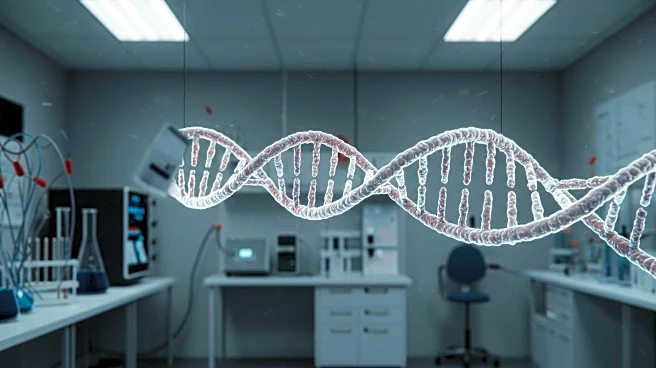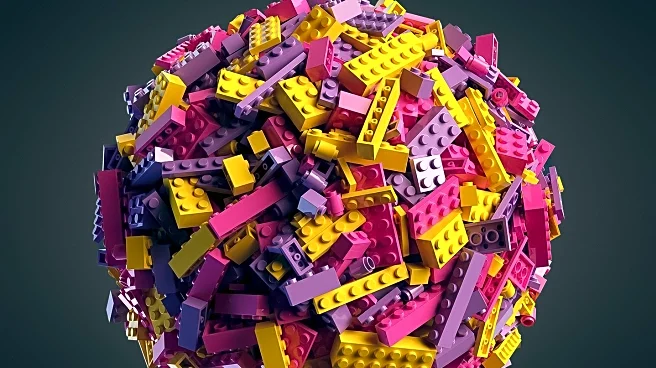What's Happening?
Researchers at the Massachusetts Institute of Technology (MIT) have utilized generative artificial intelligence to design novel antibiotics targeting drug-resistant bacteria, including Neisseria gonorrhoeae and Staphylococcus aureus (MRSA). The study, published in Cell, involved generating over 36 million potential compounds, which were screened for antimicrobial properties. The top candidates, structurally distinct from existing antibiotics, disrupt bacterial cell membranes through novel mechanisms. The research is part of MIT's Antibiotics-AI Project, which aims to explore larger chemical spaces for drug development. The team used two approaches: fragment-directed design and unconstrained molecule generation, leading to the synthesis of promising candidates like NG1 and DN1, which showed efficacy in mouse models.
Why It's Important?
The development of AI-designed antibiotics represents a significant advancement in combating multidrug-resistant bacteria, a growing public health concern. These novel compounds offer potential solutions to infections that are increasingly difficult to treat with existing antibiotics. The ability to design structurally unique molecules that target bacterial membranes could lead to breakthroughs in antibiotic therapy, reducing reliance on traditional drugs and potentially lowering the risk of resistance development. This research highlights the transformative role of AI in drug discovery, enabling scientists to explore vast chemical spaces and develop innovative treatments for challenging bacterial infections.
What's Next?
The next steps involve further modification and testing of the promising candidates NG1 and DN1 by Phare Bio, a nonprofit associated with the Antibiotics-AI Project. The researchers aim to refine these molecules for broader testing and explore their efficacy against other resistant bacteria, such as Mycobacterium tuberculosis and Pseudomonas aeruginosa. Continued collaboration between MIT and other institutions will focus on expanding the application of AI in drug design, potentially leading to new classes of antibiotics and improved treatment options for resistant infections.












